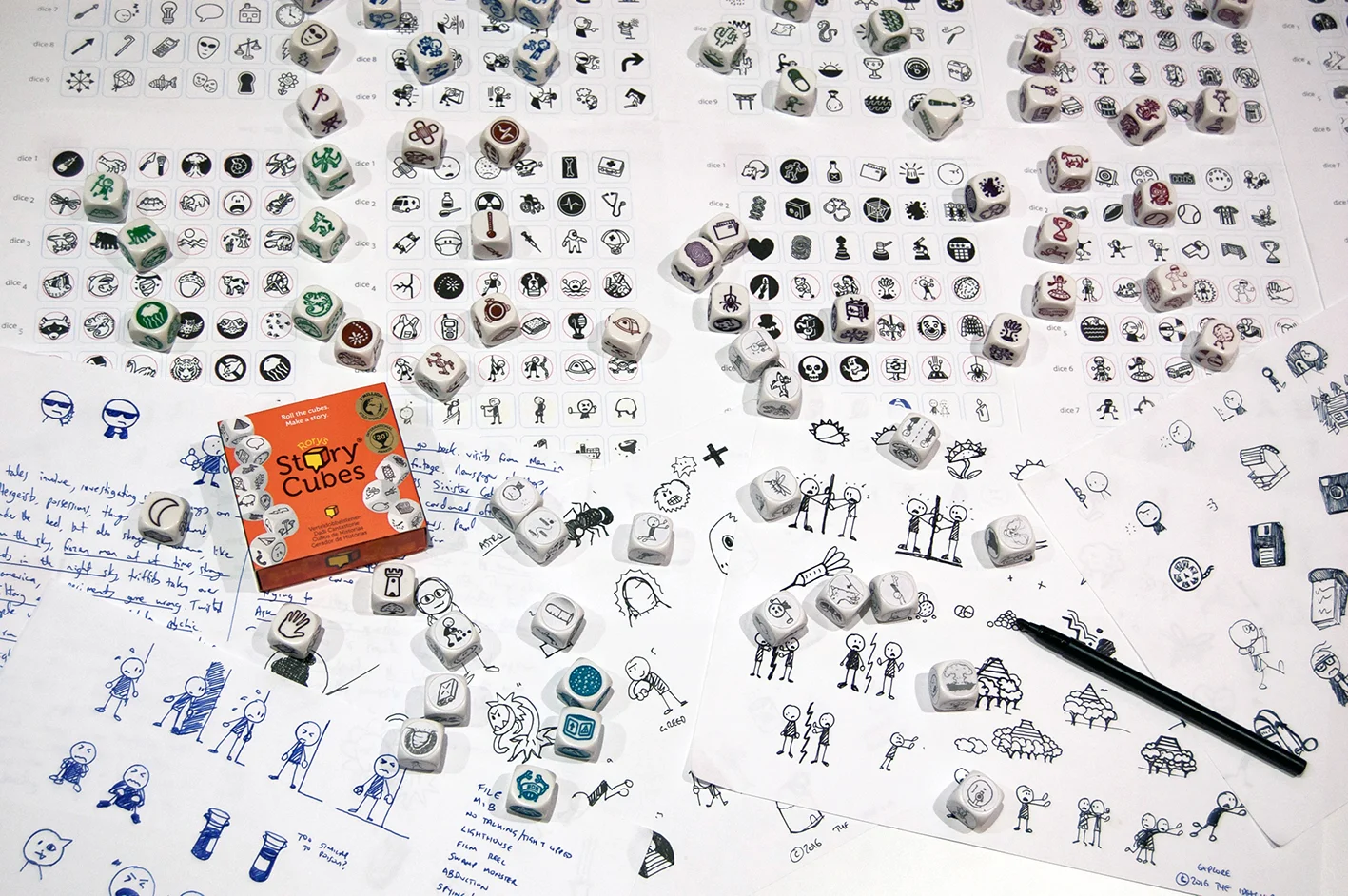THE CREATIVITY HUB
Anita Murphy is the director and co-founder of The Creativity Hub, a publisher of games and playthings that foster imagination, empathy and self esteem. They are best known for the storytelling game Rory's Story Cubes, which is sold in 50 countries around the world. Anita created The Extraordinaires Design Studio, an award-winning activity kit to introduce children to the world of invention, design and creative problem solving. Anita's background is in Graphic and Web Design. She worked in User Experience in BBC Technology for 6 years before co-founding the company. Anita, originally from Leixlip, Co.Kildare, now lives in Belfast with her partner Rory, co-founder of The Creativity Hub, and their three daughters ages thirteen, eleven and nine.
We interviewed Anita about her company, game design and the ups and downs of being in business.
What made you decide to start your company and create games?
We accidentally became a games company. We started out as a creativity training company, developing tools and training materials to assist with creative problem solving. Our first product was a deck of cards called The Inner Vision Deck, which brought a tactile element to working through problems. This led to our next product, Rory's Story Cubes, which used icons to spark word associations and stories. This had a much wider reach and its value was quickly recognised by therapists, teachers and creative writers. The real joy was hearing about three generations of families spending time, telling stories together. We realised that a game had the power to reach more people and help develop creativity than we ever could as a training company. We changed our focus and learned what we needed to know about making games in order to see it out in the world. We want to make games that matter. Physical, table-top games are more inventive than ever and we believe it is their time to shine. There is a real appetite for the physicality of things, alongside developments in the digital gaming space. We want to use the medium of table-top games to explore a wide range of meaningful themes and storylines.
What are some of the challenges you have faced on your journey so far?
Constantly learning as the world keeps changing. You have to keep changing in order to keep going. We did that initially in changing from a training to a games publisher. When we created The Extraordinaires Design Studio, an activity kit to teach design thinking, we initially developed it as a retail product. We faced challenges in it sitting on a shelf, but teachers are doing wonderful work using it in amazing ways and sharing it with each other. You have to admit when you have be going in the wrong direction and change strategy. We have recently had to make big changes and unfortunately let go some of our team. This was the most difficult thing we have had to do.
What are some of the key differences when designing products for a younger target market as compared with adults?
I think that the key difference in designing for products for children is that they are not the target 'market'. Adults sell toys and adults buy toys. One of the things that bothers me about the international toy fairs that we attend is that there are no children allowed. Too often the business of selling products meet adults' rather than children's needs. The toy industry has grown because there are more adults and less children in families. A generation or two ago, there may have been 4 children in a family and there were families of cousins, each with 3-4 children. Now those families have grown up adult children but only a few nieces or nephews between them all. The buying of product is not to fulfil the needs those children. I think the games market differs from toys in this regard because adults play games too, and adults play games with children. Good family games operate on multiple levels; they are accessible enough for the children to play but deep enough for adults to be challenged too.

